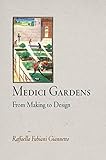Medici Gardens : From Making to Design / Raffaella Fabiani Giannetto.
Material type: TextSeries: Penn Studies in Landscape ArchitecturePublisher: Philadelphia : University of Pennsylvania Press, [2017]Copyright date: ©2008Description: 1 online resource (328 p.) : 54 illusContent type:
TextSeries: Penn Studies in Landscape ArchitecturePublisher: Philadelphia : University of Pennsylvania Press, [2017]Copyright date: ©2008Description: 1 online resource (328 p.) : 54 illusContent type: - 9780812240726
- 9781512821581
- 712.6 23
- SB466.I82 F5652 2008
- online - DeGruyter
- Issued also in print.
| Item type | Current library | Call number | URL | Status | Notes | Barcode | |
|---|---|---|---|---|---|---|---|
 eBook
eBook
|
Biblioteca "Angelicum" Pont. Univ. S.Tommaso d'Aquino Nuvola online | online - DeGruyter (Browse shelf(Opens below)) | Online access | Not for loan (Accesso limitato) | Accesso per gli utenti autorizzati / Access for authorized users | (dgr)9781512821581 |
Frontmatter -- Contents -- Preface -- Introduction -- 1. Medici Gardens -- 2. From Work of Nature to Work of Art -- 3. Writing the Garden in the Age of Humanism -- 4. Practice and Theory -- Conclusion -- Appendix A. Letter by Galeazzo Maria Sforza -- Appendix B. Metric Letter by Alessandro Braccesi -- Notes -- Bibliography -- Photographic Acknowledgments -- Index
restricted access online access with authorization star
http://purl.org/coar/access_right/c_16ec
Medici Gardens: From Making to Design challenges the common assumption that such gardens as Trebbio, Cafaggiolo, Careggi, and Fiesole were the products of an established design practice whereby one client commissioned one architect or artist. The book reverses the usual belief that a garden is the practical application of theoretical principles extracted from garden treatises, and suggests that, in the case of the gardens in Florence, garden making preceded its theoretical articulation.Drawing from Medici tax returns, inventories, and correspondence, Raffaella Fabiani Giannetto examines the transformation of these gardens from functional and pleasurable kitchen gardens to symbols of political power and family prestige. The Medici gardens of the fifteenth century were the result both of everyday living and of a poetic activity that was influenced by cultural expectations and societal demands.Crossing disciplinary boundaries, the author compares the making of actual gardens to that of the literary pleasances described by Petrarch, Boccaccio, and Ficino. Although the fictional gardens appear "designed" in that their place within literary works is carefully thought through, their actual counterparts are the product of a modus operandi, indebted to horticultural knowledge handed down from one generation to another in a slowly evolving tradition.
Issued also in print.
Mode of access: Internet via World Wide Web.
In English.
Description based on online resource; title from PDF title page (publisher's Web site, viewed 24. Apr 2022)


